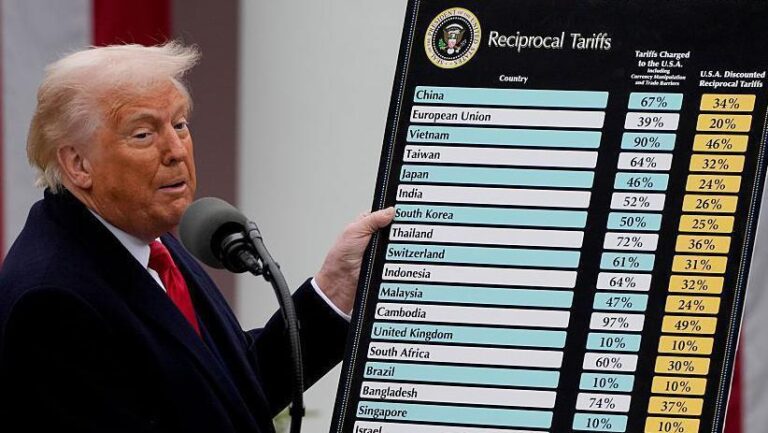The Ripple Effects of Tariffs on Australian Industries
In a notable shift that has reverberated throughout the Australian business sector, the recent tariffs enacted by the Trump governance have created both challenges and opportunities. While some industries are struggling to cope with these trade restrictions, others are discovering innovative strategies to adapt and flourish in this evolving economic landscape. This article explores the varied impacts of these tariffs on Australian enterprises, emphasizing both the difficulties faced by vulnerable sectors and the remarkable tactics employed by others to seize new prospects.As global trade dynamics continue to evolve, the effects of these tariffs will likely influence Australia’s trade relationships for years ahead.
Unpacking the Impact of Tariffs on Australian Enterprises
The introduction of tariffs under Trump’s leadership has resulted in a complex array of consequences for businesses across Australia. Certain sectors are experiencing heightened costs while others find themselves in advantageous positions. Agricultural exporters have encountered substantial hurdles as U.S. tariffs on specific goods limit their market access, leading to a marked decrease in sales figures. This situation is especially dire for beef and wine producers, who depend heavily on American consumers for their profitability.
Conversely, industries such as manufacturing and technology have seen an uptick in demand as companies seek to diversify their supply chains and lessen reliance on imports from America.
Additionally, this tariff environment has prompted many businesses to reassess their operational strategies comprehensively. Companies affected by these changes are actively seeking alternative markets while investing in innovation to maintain competitiveness. A growing number of entrepreneurs are choosing to bolster local production capabilities—not only as a response to tariff pressures but also as part of a broader strategy aimed at building resilience within their business models. Consequently, several key initiatives have emerged:
- Investment in Research & Development: Encouraging innovation that aligns with both local needs and international market demands.
- Supply Chain Diversification: reducing dependence on U.S.-based suppliers helps mitigate risks associated with fluctuating tariff rates.
- Market Expansion: Targeting emerging economies that offer growth potential outside U.S.-centric markets.
| Sector | Impact from tariffs | Future Outlook |
|—————|—————————————-|———————————-|
| Agriculture | Sales decline notably affecting beef & wine | Shift towards alternative markets |
| Manufacturing | increased domestic demand | Plans for new production facilities |
| Technology | Boosted funding for innovation | expansion into untapped markets |
Finding Opportunities Amidst Challenges
The recent implementation of Trump’s tariffs has undeniably posed significant obstacles for various Australian industries—especially those heavily reliant on exports like agriculture and manufacturing.Businesses within these fields face rising raw material costs alongside diminished competitiveness abroad.
Some specific sectors grappling with these issues include:
- Agriculture: Facing increased expenses coupled with limited access to crucial markets.
- Manufacturing: Encountering challenges related to supply chain disruptions impacting profitability.
- Mining: Experiencing variable demand levels which could affect export agreements negatively.
Despite evident struggles, other sectors are adeptly navigating this shifting terrain by leveraging newfound opportunities presented by restricted imports.Companies focusing on domestic production along with innovative practices view this period as an immense chance—an opportunity ripe for filling voids left behind due to import limitations:
- Renewable Energy: Enhancing local energy generation capabilities.
- Technology & Software Development: Expanding homegrown tech solutions tailored toward current market requirements.
- Health & Pharmaceuticals: Increasing emphasis placed upon bolstering local manufacturing capacities.
| Sector | Opportunity | Potential Growth Rate |
|——————-|———————————–|———————–|
| Agriculture | Surge in local demand | 10% |
| Technology | Heightened investment influx | 15% |
| Renewable energy | Goverment incentives available | 20% |
Strategic Approaches for Navigating Tariff Challenges
To effectively manage complexities arising from geopolitical shifts related specifically towards tariff implications; Australian firms must adopt comprehensive strategies moving forward into uncertain times ahead:
First off—diversifying supply chains should be prioritized; sourcing materials/products globally can help reduce risks tied directly back towards sudden surges regarding certain imported goods’ taxes imposed unexpectedly upon them later down line! Furthermore investing locally strengthens domestic capabilities while simultaneously decreasing reliance upon foreign entities altogether—a dual benefit!
Moreover enhancing market intelligence systems allows organizations stay informed about ongoing changes surrounding regulations/trade agreements enabling swift operational adjustments when necessary too!
Additionally forming strategic alliances/partnerships proves beneficial; collaborating closely either locally or internationally creates buffers against adverse effects stemming from imposed duties whilst expanding overall presence within respective marketplaces simultaneously!
Lastly emphasizing research development remains critical—innovating existing products or creating entirely new ones ensures sustained competitiveness despite rising costs incurred elsewhere along way! Implementing flexible pricing strategies capable adapting quickly without alienating customers becomes essential protecting profit margins during turbulent periods like now too!
Final Thoughts
The recent imposition of tariffs under Trump’s administration has undoubtedly sent shockwaves through numerous segments across Australia’s economy—substantially impacting those reliant primarily upon exports directed toward United States consumers specifically! While some enterprises struggle against barriers erected before them; others stand ready capitalize fully embracing fresh opportunities arising amidst changing landscapes around us all today!
These contrasting experiences underscore complexities inherent within global trading dynamics alongside ongoing ramifications stemming directly out international policy decisions made previously too! As Australians navigate through evolving environments ahead—their resilience/adaptability will prove vital shaping futures increasingly competitive marketplace awaits us all soon enough thereafter… With outcomes still unfolding regarding said duties imposed—we can expect stakeholders remain vigilant monitoring developments closely seeking ways mitigate risks harness potential gains found amidst uncertain economic climates prevailing currently everywhere else around globe right now indeed!




